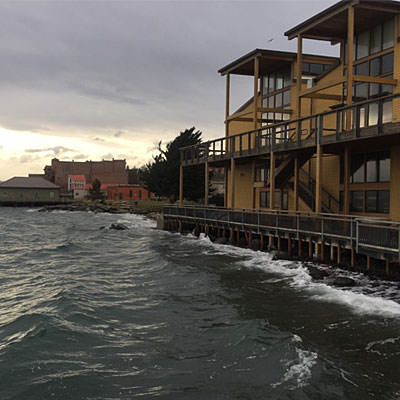Coastal communities across the U.S. saw record-setting high-tide flooding last year, forcing residents to deal with flooded shorelines, streets, and basements — a trend that is expected to continue into 2022 and beyond without improved flood defenses, according to a new NOAA report. High waters are affecting coastal economies and crucial infrastructure like waste and stormwater systems and roads.
The report, 2021 State of High Tide Flooding and Annual Outlook, documents changes in high-tide flooding patterns from May 2020 to April 2021 at 97 NOAA tide gauges along the U.S. coast, and provides a flooding outlook for these locations through April 2022, as well as projections for the next several decades.
High-tide flooding, often referred to as “nuisance” or “sunny day” flooding, is increasingly common due to years of sea level rise. It occurs when tides reach anywhere from 1.75 to 2 feet above the daily average high tide and start spilling onto streets or bubbling up from storm drains. As sea level rise continues, damaging floods that decades ago happened only during a storm now happen more regularly, such as during a full-moon tide or with a change in prevailing winds or currents.
According to the report, U.S. coastal communities saw twice as many high tide flooding days than they did 20 years ago — and the trend of near-record high tides is expected to continue through April 2022, as well as in decades to come. Along the Southeast Atlantic and Gulf coastlines, 14 locations set or tied records where rapidly increasing trends in high-tide flooding have emerged.
READ MORE at noaa.gov

